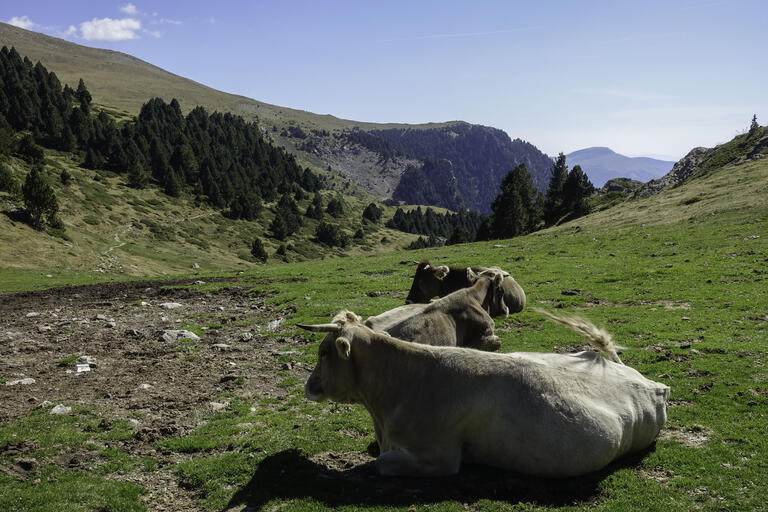
Introduction
Naturally, above 2200 m, the black pine is already small and struggles to thrive. This is where we find the dominance of grasses (fescues, sedges) that serve as food for domestic and wild herbivores (chamois, hares, mouflons, ...) during the summer. But they are also the habitat of many birds, insects, and mountain flowers (from the melting of snow until mid-summer, depending on rainfall).
Below 2200 m, the dominance of meadows expands, cutting through the pine forests. If the pressure from grazing animals decreases, shrubs first and then pines quickly recolonize the space.
When the cold arrives and the meadows turn yellow, the livestock descends to lower altitudes. Now the meadows in the valleys around the villages are grazed until winter arrives, and they are given the hay that has been cut in these same fields throughout the summer. In the past, in the middle of winter, the livestock was transported by truck to warmer areas. Nowadays, farms are set up to house animals near grazing areas.
It is also the habitat of mountain flowers, starring in spring until mid-summer (depending on rainfall).
Scattered here and there, you will see a kind of thistle: the carline thistle (foto). The carline thistle has no stem, and the spiky leaves form a rosette at ground level. Chamois like it a lot. It is hung on the doors of village houses and serves to indicate the degree of ambient humidity. The thick and deep root is used in the production of wines and aperitifs. The receptacle is edible, like the artichoke.
The carlines at lower altitudes are larger varieties.